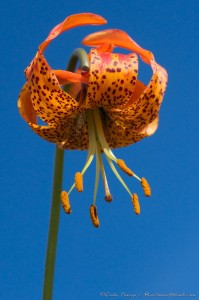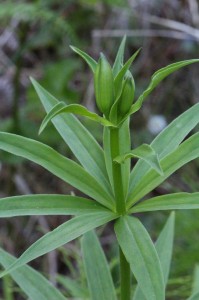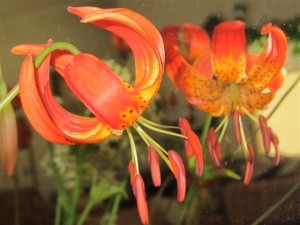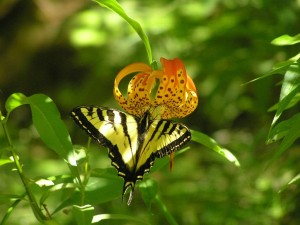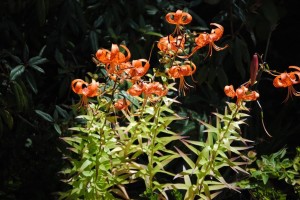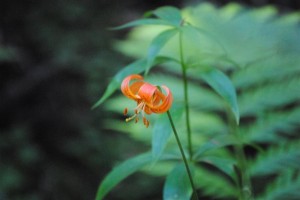Leopard Lilies, Lilium pardalinum, are wonderful to find. They grow on tall stalks and can have multiple blossoms. They grow where water is nearby. You might find some growing alongside the Gualala River.
Craig Tooley took this closeup of one. They are sometimes called Tiger Lilies. Legend says if you smell a Tiger Lily you will get freckles.
Frank Drouillard took the photo below, which shows a Leopard Lily about to bloom. It also shows the leaves. This plant was well over two feet tall.
Thanks to Frank and Craig for allowing me to share their photos with you here. To much more of Craig's Coast photography, here's the link to his website: www.ruffimage.com

